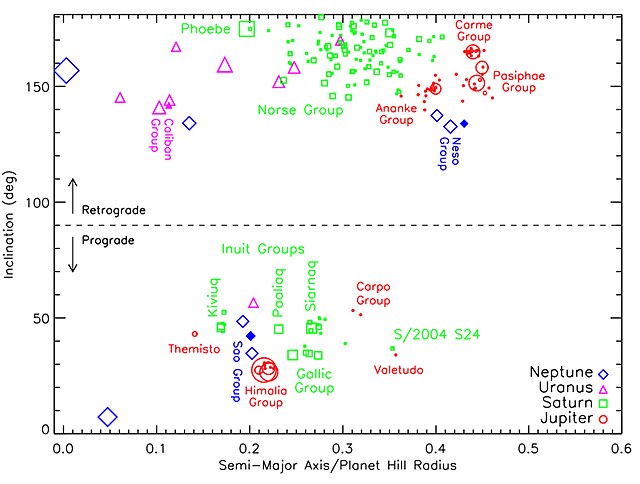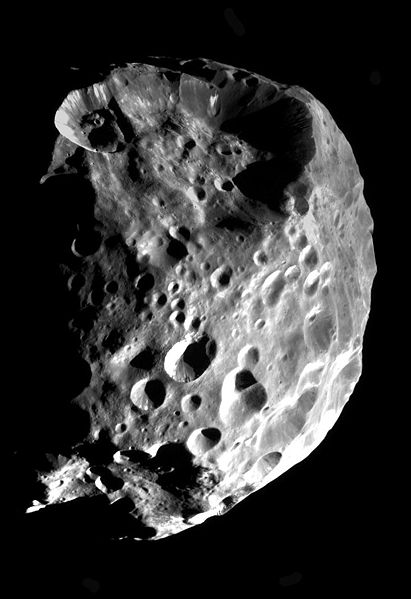Themisto, also known as Jupiter XVIII, is a small prograde irregular satellite of Jupiter. It was discovered in 1975, subsequently lost, and rediscovered in 2000.
Rediscovery images of Themisto taken by the UH88 telescope in November 2000
In astronomy, an irregular moon, irregular satellite, or irregular natural satellite is a natural satellite following a distant, inclined, and often highly elliptical and retrograde orbit. They have been captured by their parent planet, unlike regular satellites, which formed in orbit around them. Irregular moons have a stable orbit, unlike temporary satellites which often have similarly irregular orbits but will eventually depart. The term does not refer to shape; Triton, for example, is a round moon but is considered irregular due to its orbit and origins.
Irregular satellites of Jupiter (red), Saturn (green), Uranus (magenta) and Neptune (blue) (including Triton). The horizontal axis shows their distance from the planet (semi-major axis) expressed as a fraction of the planet's Hill sphere's radius. The vertical axis shows their orbital inclination. Points or circles represent their relative sizes. Data as of February 2024.
Phoebe, Saturn's largest irregular satellite



